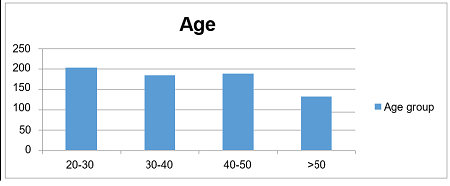
International Journal of Preclinical and Clinical Research
Year: 2021, Volume: 2, Issue: 1, Pages: 1-4
Original Article
M S Padmajothi1,2, M C Chaitra3*, Sri Archana Shetty4
1 Professor and HOD, Department of Ophthalmology, Basaveshwara Medical College and Hospital, Chitradurga, 577502, Karnataka, India
2 Former Professor, Department of Ophthalmology, Sri Devaraj Urs Medical College, Tamaka, Kolar, Karnataka, India
3 Assistant Professor, Department of Ophthalmology, Sri Devaraj Urs Medical College, Tamaka, Kolar, Karnataka, India
4 Post Graduate, Department of Ophthalmology, Sri Devaraj Urs Medical College, Tamaka, Kolar, Karnataka, India
*Corresponding author
Email: [email protected]
Received Date:15 February 2021, Accepted Date:26 March 2021, Published Date:04 April 2021
To assess the visual acuity, identify the cause for reduced vision & to advice patients regarding correction of vision in drivers for safe driving. Analysis of a cross-sectional study of people having a history of driving — two-wheeler, four-wheeler or autorickshaw was done. Best corrected visual acuity (BCVA) less than 6/6 in the better eye were selected for the study through screening camps for KSRTC bus drivers, Autorickshaw drivers and patients coming to the OPD of R L Jalappa Hospital & Research Center in Kolar district, having a history of driving a two-wheeler, four-wheeler & autorickshaw were included. Patients who have stopped driving due to reduced vision were excluded from the study. After taking an informed consent, patients underwent a comprehensive ophthalmic examination. Those patients who were identified as having decreased vision were advised regarding the necessary treatment. Out of 706 patients, 87.99 % of drivers in this study were males and majority belonged to the age group between 20-30 years. 29.17 % of patients did not have driving license though they were driving either 2 or four-wheeler vehicles or Autorickshaws. 41% of patients did not have any eye checkup prior to our examination and after our examination was done 58.9% of patients were advised spectacle correction. This highlights the need for intensified health education to encourage drivers who experience these defects to seek prompt medical help and advice. The prevalence of refractive errors among the study population also indicates the need to enforce the law on comprehensive eye examination by appropriate professionals, as enshrined in the law, rather than just measuring visual acuity prior to acquiring or renewing drivers’ licenses, as is currently the case.
Keywords: Best corrected visual acuity; drivers; reduced vision; RTA
© 2021 Padmajothi et al. This is an open-access article distributed under the terms of the Creative Commons Attribution License, which permits unrestricted use, distribution, and reproduction in any medium, provided the original author and source are credited. Published By Basaveshwara Medical College & Hospital, Chitradurga, Karnataka
Subscribe now for latest articles and news.